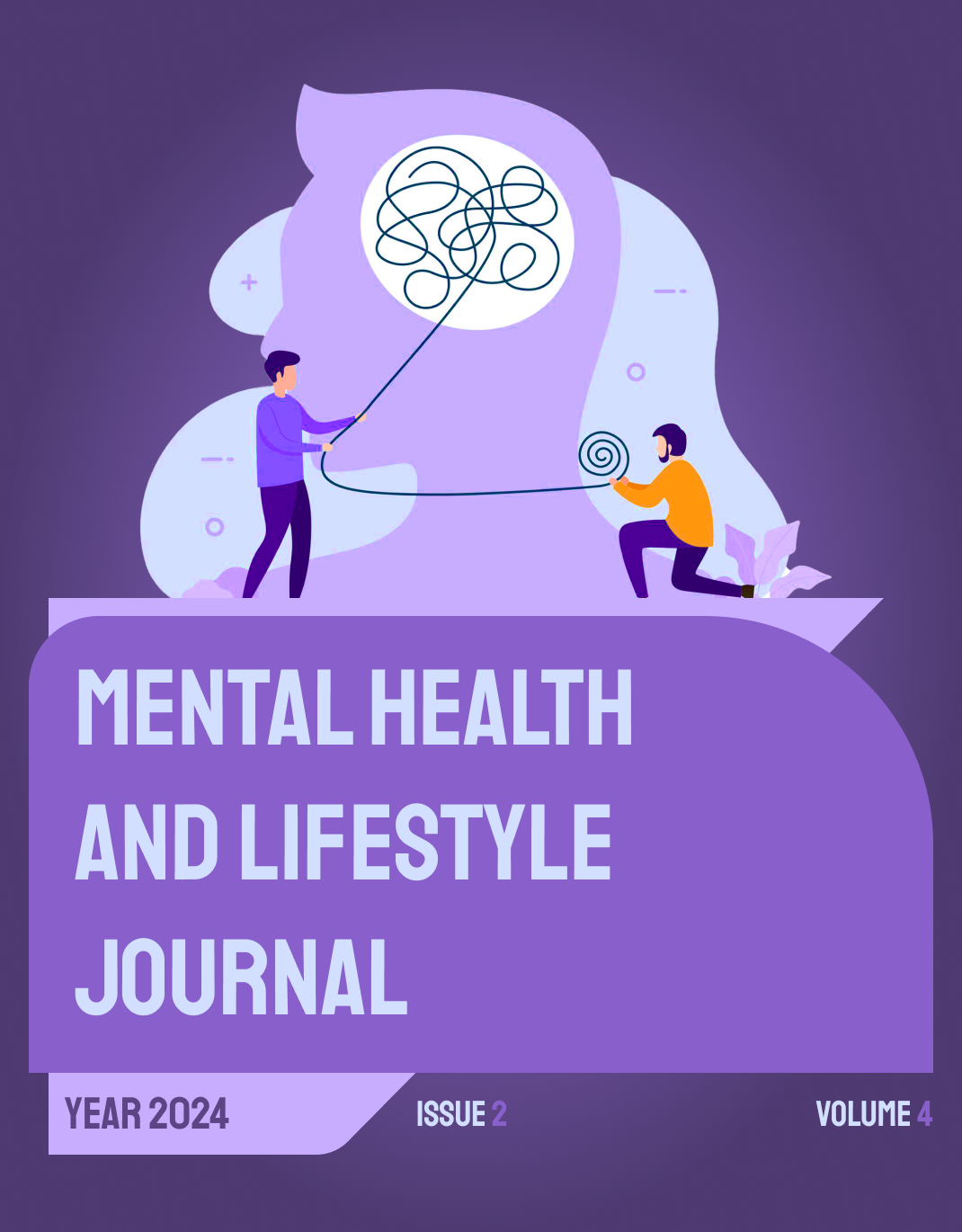The Effectiveness of Mindfulness-Based Cognitive Therapy on Anxiety and Rumination in Women with Body Dysmorphic Disorder
Keywords:
Mindfulness-Based Cognitive Therapy, Anxiety, Rumination, Body Dysmorphic DisorderAbstract
The present study aimed to examine the effectiveness of Mindfulness-Based Cognitive Therapy (MBCT) on anxiety and rumination levels in women diagnosed with Body Dysmorphic Disorder (BDD). This study employed a quasi-experimental design with pre-test and post-test measures to assess changes in both the experimental and control groups. The statistical population consisted of all women diagnosed with BDD who attended counseling centers in Tehran in 2024. A sample of 30 women with this disorder was voluntarily and non-randomly selected from the counseling centers in Tehran and then randomly assigned to two groups: an experimental group (n = 15) and a control group (n = 15). The instruments used in this study were the Beck Anxiety Inventory and the Ruminative Response Scale developed by Nolen-Hoeksema and Morrow. For data analysis, multivariate analysis of covariance (MANCOVA) was employed. The results revealed a significant difference between the experimental and control groups at the post-test stage in the variables of anxiety and rumination. It can be concluded that Mindfulness-Based Cognitive Therapy is effective in reducing anxiety and rumination in women with Body Dysmorphic Disorder.
Downloads
References
1. Hincapié D, Ortega A, Kitaigorodsky M. My Doctor Prescribed Medication, but I Am Afraid to Take It. 2024:221-30. doi: 10.1093/med/9780197667859.003.0029.
2. González-Flores CJ, García-García G, Lerma A, Pérez‐Grovas H, Lara RMM, Rebeca María Elena Guzmán S, et al. Resilience: A Protective Factor From Depression and Anxiety in Mexican Dialysis Patients. International Journal of Environmental Research and Public Health. 2021;18(22):11957. doi: 10.3390/ijerph182211957.
3. Skalski‐Bednarz SB, Konaszewski K, Toussaint L, Harder JP, Hillert A, Surżykiewicz J. The Mediating Effects of Anxiety on the Relationships Between Persistent Thinking and Life Satisfaction: A Two‐wave Longitudinal Study in Patients With Anxiety Disorders. Journal of Clinical Psychology. 2023;80(1):198-206. doi: 10.1002/jclp.23602.
4. Velikanov AA, Levashkevich YL, Stoljarova AA, Демченко ЕА. Age and Sex Determined Differences in Cognitive Distortions and Psychological Traits in Patients With Coronary Heart Disease Before Coronary Artery Bypass Surgery. Sibirskiy Psikhologicheskiy Zhurnal. 2022(83):184-203. doi: 10.17223/17267080/83/10.
5. Yücel D, Kurtoğlu MB. The Mediating Role of Cognitive Distortions in the Relationship of Self-Compassion With Social Anxiety Disorder Symptoms. İnönü Üniversitesi Sağlık Hizmetleri Meslek Yüksek Okulu Dergisi. 2024;12(1):1-13. doi: 10.33715/inonusaglik.1288306.
6. Kurtoğlu MB, Yücel D, Katar KS, Akdoğan Hİ. The Role of Self-Compassion and Social Anxiety in the Relationship Between Cognitive Distortions and Emotional Eating. Journal of Cognitive Psychotherapy. 2024;39(1):92-103. doi: 10.1891/jcp-2023-0048.
7. DiMaio-McCracken J. Anxiety Relief Through the Process of Eliminating Cognitive Distortions. The Interdisciplinary Journal of Advances in Research in Education. 2020;3(1):1-7. doi: 10.55138/ab104284jcm.
8. Rutter LA, Edinger A, Lorenz-Luaces L, Thiy Mt, Valdez D, Bollen J. Anxiety and Depression Are Associated With More Distorted Thinking on Social Media: Longitudinal Observational Study (Preprint). 2024. doi: 10.2196/preprints.68338.
9. Bükrük T, Aldemir İD. The Role of Looming Cognitive Style in Health Anxiety Through the Mediation of Anxiety Sensitivity and Intolerance of Uncertainty. Klinik Psikoloji Dergisi. 2024. doi: 10.57127/kpd.26024438.1533544.
10. Yazici-Celebiİ G, Yılmaz M, Karacoskun ME, ŞAhİN Aİ. Examination of the Mediating Role of Attachment Dimensions in the Link Between Suicide Probability and Cognitive Distortions About Relationships in University Students. Journal of Education in Science Environment and Health. 2024:60-8. doi: 10.55549/jeseh.1419349.
11. Özdemir İ, Kuru E. Investigation of Cognitive Distortions in Panic Disorder, Generalized Anxiety Disorder and Social Anxiety Disorder. Journal of Clinical Medicine. 2023;12(19):6351. doi: 10.3390/jcm12196351.
12. Ebrahimi S, Moheb N, Vafa MA. Comparison of the Effectiveness of Cognitive-Behavioral Therapy and Acceptance and Commitment Therapy on Cognitive Distortions and Rumination in Adolescents With Social Anxiety Disorder. Practice in Clinical Psychology. 2024;12(1):81-94. doi: 10.32598/jpcp.12.1.922.1.
13. Mobach L, Rapee RM, Klein AM. The Role of Distorted Cognitions in Mediating Treatment Outcome in Children With Social Anxiety Disorder: A Preliminary Study. Child Psychiatry & Human Development. 2021;54(2):558-69. doi: 10.1007/s10578-021-01268-6.
14. Khan S, Khalid A, Iqbal MM, Shahzadi N. Cognitive Distortions, Social Interaction Anxiety and Life Satisfaction Among School Students. J Pak Psychiatr Soc. 2021;18(04):5-8. doi: 10.63050/jpps.18.04.120.
15. Kim Y, Song H. The Influence of Parents’ Anxiety on Children’s Anxiety: Mediation Effects of Parents’ Overprotection and Children’s Cognitive Distortions. Korean Journal of Child Studies. 2019;40(5):55-68. doi: 10.5723/kjcs.2019.40.5.55.
16. Büge B, Koç V. Parenting Style and Anxiety Symptoms a Moderated-Mediation Analysis of Interpersonal Cognitive Distortions and Anxiety Disorder. Yaşam Becerileri Psikoloji Dergisi. 2024;8(16):83-97. doi: 10.31461/ybpd.1520575.
17. Haikal M. Terapi Kognitif Perilaku Untuk Mengurangi Gejala Kecemasan. Procedia Studi Kasus Dan Intervensi Psikologi. 2022;10(2):47-52. doi: 10.22219/procedia.v10i2.19215.
18. Rahmawati R. Menurunkan Gejala Kecemasan Pada Gangguan Kecemasan Umum Dengan Cognitive Therapy. Procedia Studi Kasus Dan Intervensi Psikologi. 2022;10(4):103-7. doi: 10.22219/procedia.v10i4.19184.
19. Budiyono A, Sugiharto DYP, Sutoyo A, Rachman ME. Cognitive Behavior Therapy Model With Cognitive Restructuring Techniques to Reduce Inmates’ Pre-Release Social Anxiety Disorder. 2020. doi: 10.4108/eai.29-6-2019.2290272.
20. Amet E, Muhtar TH, ÖZÇElİK FN. Çekingen Kişilik Bozukluğunun Tedavisinde Bilişsel Davranışçı Terapi Ve Bilişsel Davranışçı Grup Terapisinin Karşılaştırılması. Psikiyatride Guncel Yaklasimlar - Current Approaches in Psychiatry. 2023;15(2):240-50. doi: 10.18863/pgy.1117523.
21. Melehin A. Maladaptive Health Anxiety: The Application of Remedial Remote Cognitive Behavioral Therapy. Russian Journal of Telemedicine and E-Health. 2023;9(2):29-39. doi: 10.29188/2712-9217-2023-9-2-29-39.
22. K. CM, Palanisamy V. Effect of Anxiety on Impulsivity: Mediating Role of Cognitive Flexibility. International Journal for Multidisciplinary Research. 2024;6(2). doi: 10.36948/ijfmr.2024.v06i02.16990.
Downloads
Published
Submitted
Revised
Accepted
Issue
Section
License

This work is licensed under a Creative Commons Attribution-NonCommercial 4.0 International License.










